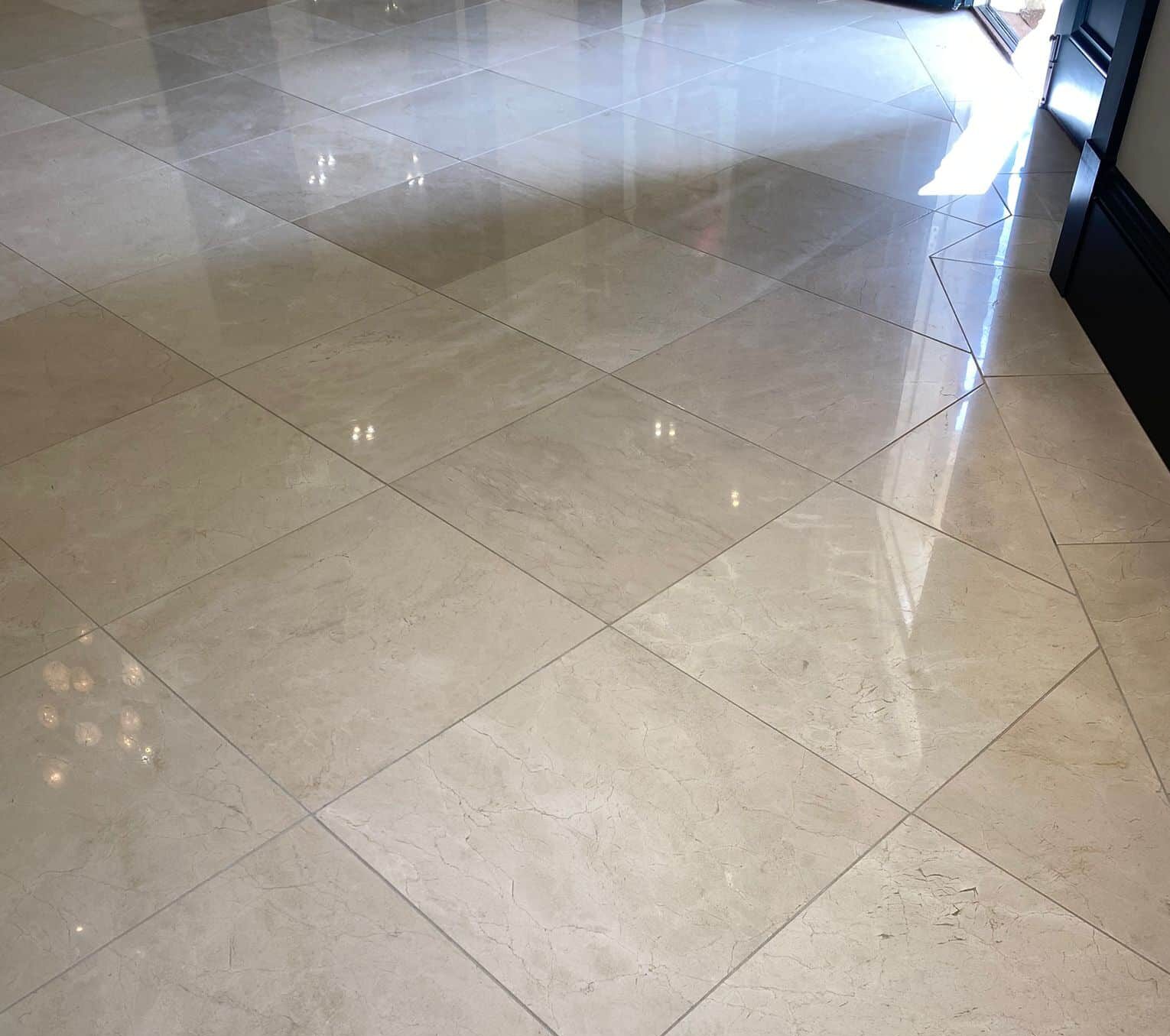One of the most common requests that we receive is for etch mark removal. In fact, we do so much of it, that we thought we’d dedicate a blog to our favourite marble transformations.
What is an etch mark?
This refers to a dull or white patch on stone that is caused by contact with acid. Marble is one of several stone types that is sensitive to acids due to its geology. The stone is formed from calcium carbonate and this means that when acid comes into contact with the stone a reaction will occur. What you will usually see is a slight rough looking mark that might be slightly dull or white depending on the colour of your marble.
Etch Mark Removal
The good news is that this mark is only surface level and so can be restored. When your marble is first installed, it will have had an impregnator applied. This penetrates the stone and protects from within. It means that anything that is dropped onto the marble will only cause damage to the surface. This means that by removing a very thin layer of the stone, the marble can be fully restored to look brand new. During this process, you can also choose to change the finish of the stone. There is a little more about the process of stone restoration and the finishes here and you can learn about the types of marble sealant here.
Marble Worktops
Etch mark removal is most common for marble worktops. Kitchens are full of acid hazards and so accidents can easily occur.

On a dark worktop etch marks are usually the easiest to spot as they present as white patches.

On a white worktop, even if not highly polished, the etch mark will usually look dull.

Over time this will accumulate and create and overall lack lustre appearance.

This makes the worktop lose its grandeur, but all is not lost. As all of the above and below photos demonstrate, the stone can be restored. You can also reduce the risk by following our tips on looking after a stone worktop here.

If an accident does happen, then it is important to blot the spillage. When you wipe the liquid, this will further spread the stain.
Marble Bathrooms
We are also frequently asked for etch mark removal services for marble bathrooms.

When it comes to marble bathrooms, one of the key causes of etch marks is sitting water.

The water that we use every day is not pH neutral. This means that after prolonged contact with the stone, it can start to react with it like any other acid

This can be further exacerbated in areas where there is particularly hard water and limescale that leaves deposits behind.

The worst thing that you can do if this does happen is reach for a limescale remover as the acid content in this will further damage the stone.
We recommend only to use pH neutral cleaning products and you can find out more about the solutions that we suggest here.

It is also important to think about the products that you use to clean other areas of the bathroom. Here you can see overspray that has caused an etch mark on the marble floor.

Remember to think about where you place cosmetics and other bottles on your stone too. The trapped water and drips of liquid can accumulate underneath.
To request a copy of our Athena Aftercare guide packed with simple steps to look after all the stone in your home email info@athenastoncare.co.uk



















